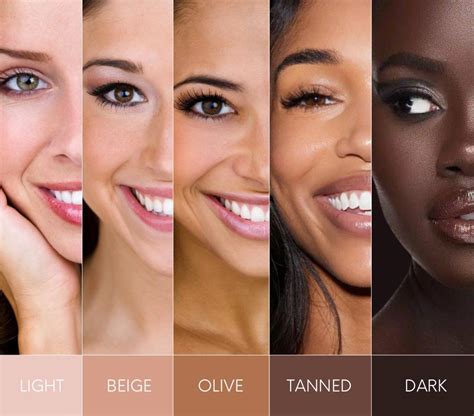Finding the perfect hair color to complement your brown skin can be a daunting task, but with the right shades and techniques, you can achieve stunning results that enhance your natural beauty. This comprehensive guide will provide you with everything you need to know about hair dye for brown skin, from choosing the perfect shade to applying it like a pro.

Understanding Hair Dye for Brown Skin
Brown skin contains varying levels of melanin, which gives it a warm, rich tone. When selecting a hair color, it’s important to choose shades that complement and enhance this warmth. Colors that are too dark or too light can wash out your skin tone or create an unnatural contrast.
Choosing the Perfect Shade
The best hair dye shades for brown skin typically fall within the warm or neutral color families. These colors harmonize with the skin’s undertones and create a flattering, natural-looking effect. Here are some popular options to consider:
- Chocolate Brown: A classic and versatile shade that adds depth and richness.
- Chestnut Brown: A deeper, reddish-brown hue that adds warmth and sophistication.
- Caramel Highlights: Subtle, golden highlights that brighten and illuminate brown hair.
- Golden Honey: A warm, buttery shade that adds a touch of sweetness and radiance.
- Toffee: A rich, nutty shade that creates a captivating, multidimensional effect.
Applying Hair Dye at Home
If you’re comfortable applying hair dye at home, follow these step-by-step instructions to achieve professional-looking results:
- Prepare your hair: Wash and towel-dry your hair to remove any oils or products that could interfere with the dye’s absorption.
- Protect your skin: Apply a thick layer of petroleum jelly along your hairline and ears to prevent staining.
- Mix the dye: Follow the manufacturer’s instructions to prepare the dye mixture.
- Apply the dye: Using a brush or applicator bottle, apply the dye evenly from roots to tips. Focus on covering the gray areas first.
- Process: Leave the dye on for the recommended amount of time, as per the manufacturer’s instructions.
- Rinse and condition: Once the processing time is complete, rinse your hair thoroughly and apply a deep conditioner to restore moisture and shine.
Professional Hair Dyeing
If you prefer professional results or have complex hair needs, consider visiting a hairstylist. Professional hairdressers can help you determine the perfect shade for your skin tone and hair type, and they have the expertise and tools to achieve a flawless application.
Trends and Innovations
The hair dye industry is constantly evolving, offering a wide range of new technologies and products to enhance your hair coloring experience. Here are some of the latest trends:
- Semi-Permanent Hair Dye: These dyes fade gradually over time, allowing you to experiment with different shades without committing to a permanent change.
- Foam Hair Dye: Foaming hair dyes create a rich, creamy texture that distributes evenly through the hair, making it easier to apply and control.
- Ammonia-Free Hair Dye: These gentle formulas minimize damage to the hair and scalp, making them suitable for sensitive skin and frequent use.
Pain Points and Motivations
Understanding the pain points and motivations of consumers is crucial for developing effective hair dye solutions. Common pain points include:
- Color fading: The color fading over time can be frustrating, especially for those who frequently color their hair.
- Hair damage: Hair dyes can contain harsh chemicals that can damage the hair, leading to dryness, breakage, and split ends.
- Allergic reactions: Some individuals may experience allergic reactions to certain hair dye ingredients, including ammonia and PPD.
Motivations for seeking hair dye include:
- Enhancement of natural beauty: Hair dye can help individuals accentuate their natural hair color or change it to a desired shade.
- Covering gray hair: Gray hair can be a sign of aging and can be covered with hair dye to restore a youthful appearance.
- Fashion statement: Hair dye is often used as a fashion statement to express personal style and creativity.
Market Analysis
The global hair dye market is anticipated to reach a value of $27.5 billion by 2027, according to Mordor Intelligence. This growth is attributed to rising disposable income, increasing fashion consciousness, and the expansion of the beauty industry.
Benefits of Hair Dye
Hair dye offers numerous benefits, including:
- Enhanced appearance: Hair dye can transform your hair’s color, giving you a more vibrant and youthful appearance.
- Boosted confidence: A new hair color can boost your confidence and make you feel more attractive.
- Personal expression: Hair dye allows you to express your individuality and creativity.
Tables
Table 1: Popular Hair Dye Brands
| Brand | Shade Range | Features |
|---|---|---|
| L’Oréal Paris | 60+ shades | Ammonia-free, semi-permanent |
| Garnier | 50+ shades | Nourishing oils, creamy texture |
| Clairol | 40+ shades | Permanent and semi-permanent options |
| Revlon | 30+ shades | Fade-resistant, conditioning formula |
| John Frieda | 20+ shades | Color-correcting, root touch-up |
Table 2: Hair Dye Types
| Type | Features | Pros | Cons |
|---|---|---|---|
| Permanent | Long-lasting (6-8 weeks) | Vibrant, permanent color | Can damage hair |
| Semi-Permanent | Fades gradually (4-6 weeks) | Less damaging, easy to remove | Less vibrant |
| Temporary | Washes out in 1-2 washes | Instant color, no damage | Fades quickly |
| Root Touch-Up | Covers gray roots only | Temporary fix, convenient | Can create a line of demarcation |
Table 3: Pain Points and Motivations
| Pain Point | Motivation |
|---|---|
| Color fading | Enhance natural beauty |
| Hair damage | Cover gray hair |
| Allergic reactions | Fashion statement |
Table 4: Market Trends
| Trend | Benefits |
|---|---|
| Semi-Permanent Hair Dye | Less damaging, easy to remove |
| Foam Hair Dye | Easier to apply, even distribution |
| Ammonia-Free Hair Dye | Gentle on hair and scalp |
